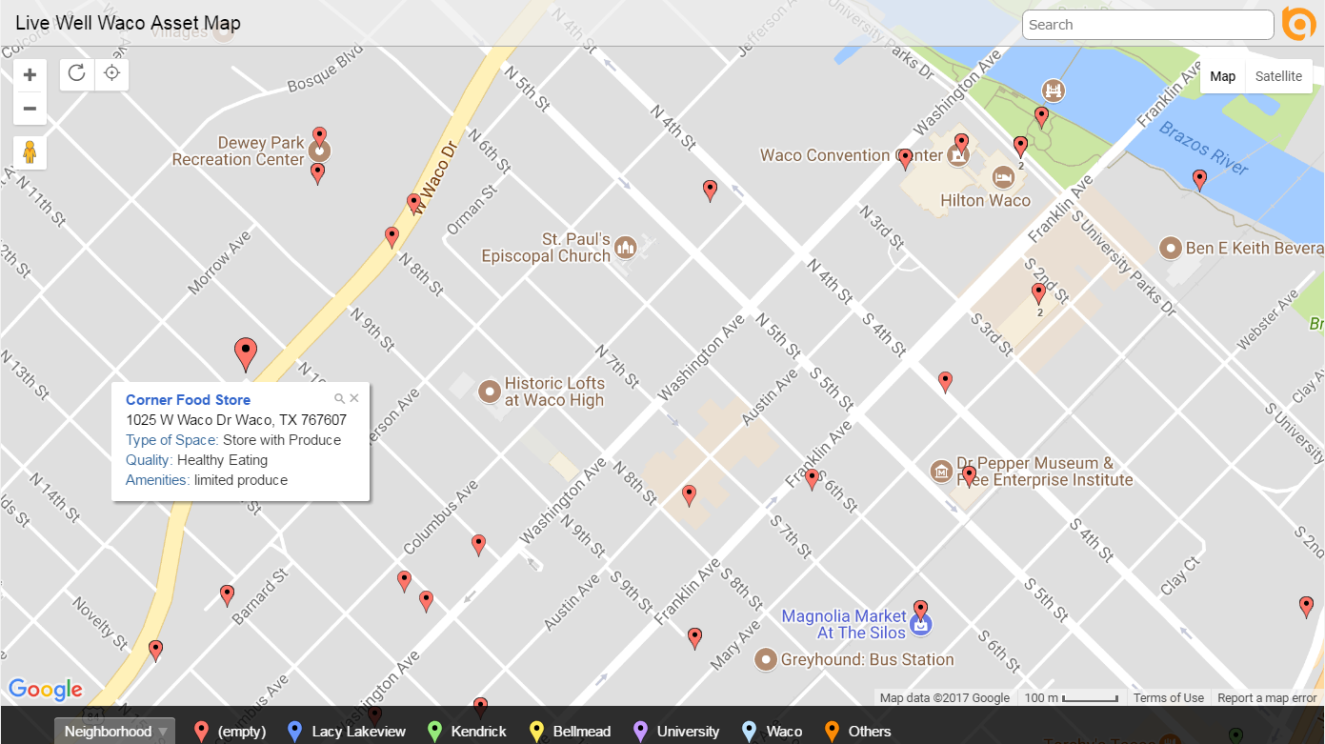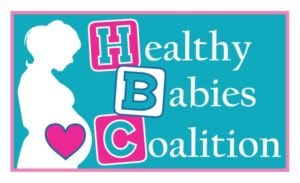(During these last few weeks of December we will be reprising the Top 10 Most Opened Blog Posts for 2018 from the Act Locally Waco blog. I couldn’t possibly pick my favorites – so I used the simple (cop out?) approach of pulling up the 10 blog posts that got the most “opens” according to our Google Analytics. It is an intriguing collection that gives at least a little insight into the interests and concerns of Act Locally Waco readers. I hope this “Top 10” idea inspires you to go back and re-read your personal favorites. There have been so many terrific ones… If you would like to see the Top 10 according to Google Analytics, here’s the link: Top 10 Most Opened Blog Posts of 2018. Merry Christmas! — ABT)
By Christy Perkins
The Community Health Worker Initiative is an innovative program designed to bridge the gap between the community and available resources. The program methodically targets 4 zip codes in Waco that could benefit from these resources: 76704, 76705,76706, and 76707. As Community Health Workers (CHW) we are trained to respond to cultural diversity with understanding and acceptance to help clients overcome barriers to using the available health resources. Our role is to connect clients to resources and help them navigate the healthcare system. By doing so, we help individuals reach a state of self-sufficiency to create a healthy and thriving community. We aim to build trusting relationships with our clients, to increase basic and critical health education that will develop confidence in those facing adversity, and to decrease unnecessary emergency (E.R) visits.
In 2016, I began purposefully researching and embedding myself into organizations and projects that are geared toward advocacy and health. I became passionate about client advocacy after personal life experiences left me in the dark about such services. When my oldest son fell ill as an infant, I didn’t know that patient advocates were available to help me manage this uncertain and scary time in my life. No one stepped in to advocate on our behalf by making me aware of available services that could support my son. That is when I became prayerful and intentional in regard to advocacy and awareness. I grew interested in holistic methods of health during that time and now find myself on the path to become more educated in this area. I saw this opportunity with the Waco-McLennan County Public Health District as a foot in the door to professionally connect to, advocate for, and educate individuals who have been left in the dark like I once was. I aspire to be a voice for those who feel their voice has been silenced.
In preparing to become a CHW, my coworkers and I underwent 160-hours of training over the course of 4 months to become certified by the Texas Department of Human Services (TDHS). The training covered 8 core competencies: communication, interpersonal, service coordination, capacity building, advocacy, teaching, organizational, and knowledge base skills. During training, we began attending coalition meetings, community meetings that were open to the public, toured facilities of community organizations, and had several guest speakers who assist the community explain their services. Additionally, I’m an active participant in Leadership Plenty, Round 7, which builds skills in community leadership, managing conflict, diversity, and taking action. The CHW training together with the leadership training are important tools when working with clients and partners.
Now that my fellow CHW’s and I have completed our training, we are preparing our first project! We will be hosting launch parties in the 4 zip codes that are the focus of this program. This will be an opportunity for the community to become familiar with the CHW’s assigned to their neighborhoods as well as enjoy the festivities that we and our community partners will have available to the families. Check out our new Facebook page — McLennan County Community Health Worker Initiative — for updates on these events!
I am truly looking forward to helping my CHW team in piloting this program. I feel the beauty of this program is that we are able to meet our clients where they are in their current life situation and create an action plan that is attainable within our capacity. My hope is to assist them with self-reliance when developing goals they desire to achieve and that will be beneficial to their well-being. In turn, creating a partnership with those clients to assure them I am dedicated to their personal successes. I will strive to access integrative resources on their behalf while preparing them to confidently do so independently. My personal goal is to specialize in nutrition and help guide others in holistic lifestyle choices to improve their quality of life.
I look forward to continuing to build relationships with community partners to tackle the problems of our community by collecting information at the grassroots level that will support and develop this program. We will be working closely with the healthcare system in Waco to assure that this program is effectively aiding the community.
I’m looking forward to working with my fellow CHW’s in beginning walking groups within the communities we are serving. This is an example of the kinds of efforts that will help us connect with fellow residents and encourage healthy lifestyle routines. This is an exciting time for us as we embark on a mission that will shape a program that has been conjured up through discussion, data development, and planning for years. What an honor it is to be entrusted as the charter group to thrust this project into a flourishing program!
 Christy Perkins is a certified Community Health Worker for zip code 76707. She currently serving on the Garden Committee at Brook Avenue Elementary. She is looking forward to becoming a graduate of the prestigious leadership training with the Leadership Plenty Institute in March of 2018 and serving on the YMCA, Young Junior Professionals Board. When she isn’t involved in community work, she is a Mother of 3 handsome boys. They keep her life busy and entertaining. She has a passion for writing, reading, and fellowship. She is originally from Amarillo, Tx but has grown to love Waco, Tx and is looking forward to building a future here. You can reach her at [email protected] or on Facebook at McLennan County Community Health Worker.
Christy Perkins is a certified Community Health Worker for zip code 76707. She currently serving on the Garden Committee at Brook Avenue Elementary. She is looking forward to becoming a graduate of the prestigious leadership training with the Leadership Plenty Institute in March of 2018 and serving on the YMCA, Young Junior Professionals Board. When she isn’t involved in community work, she is a Mother of 3 handsome boys. They keep her life busy and entertaining. She has a passion for writing, reading, and fellowship. She is originally from Amarillo, Tx but has grown to love Waco, Tx and is looking forward to building a future here. You can reach her at [email protected] or on Facebook at McLennan County Community Health Worker.
The Act Locally Waco blog publishes posts with a connection to these aspirations for Waco. If you are interested in writing for the Act Locally Waco Blog, please email [email protected] for more information.
By Glenn Robinson
Health care is among the most heavily regulated industries in America – virtually every aspect of the health care system is subject to government oversight.
There are regulatory mechanisms to supervise the doctors and professionals who render care; the institutions in which care is provided, such as hospitals and clinics; the medications and medical devices that are the tools of care; and the insurance coverage that finances it all. These regulations are developed and implemented by all levels of government — federal, state and local — as well as private organizations.
Everyone in health care agrees that regulations and standards are necessary to ensure compliance and to provide safe health care to every patient. Policy debates, for the most part, typically focus not on whether oversight should exist, but rather on how it should be structured. Impartial, external oversight is considered necessary to protect the public interest – even by those who are especially suspicious of government bureaucracy.
American health care has flourished over the past 100 years. Rather than hindering its progress, the complex system of government regulation actually may have served to support and nurture it.
Consider, for example, the public confidence engendered in the competence of physicians through licensure requirements and in the safety and effectiveness of prescription drugs through the Food and Drug Administration’s approval process.
Another form of regulation is known as HIPAA. At some point while filling out a bevy of forms at the doctor’s office, you may have run across this term.
The Health Insurance Portability and Accountability Act, or HIPAA, was passed by Congress in 1996 and was intended to improve health care efficiency by standardizing electronic data exchange and protect the privacy of patient records.
Since 2010, as part of national health care reform, there has been increased urgency in transitioning to digital versions of patients’ paper charts called electronic health records, or EHRs.
EHRs can contain a patient’s medical history, diagnoses, medications, treatment plans, immunization dates, test results and more. But they’re not just a replacement for paper charts.
Part of what makes EHRs so powerful is that they also allow doctors and other care providers to access evidence-based tools that can be used to make decisions about a patient’s care in real time.
Another key advantage of EHRs is convenience. Health information can be created and securely managed digitally by authorized providers and shared with other providers at other locations.
This helps cut down on the number of forms patients must fill out and can eliminate the need for duplicate testing, as well as promote legible, complete medical documentation for streamlined coding and billing.
With all this information available to be shared with the touch of a button, precautions must be taken to ensure the privacy of the patient. As EHRs continue to evolve, so must our regulation of them.
The HIPAA law’s privacy standards strive to give patients rights over their health information, and set boundaries on who can receive a patient’s personal health information. Those who must follow the law include healthcare providers such as hospitals, doctors and nurses, pharmacies, insurance companies, and government programs such as Medicare and Medicaid.
The law limits the use of patient information by health care providers to specific purposes. Patient information can only be shared if it is necessary to coordinate treatment, pay providers for patient care, protect public health, assist police in criminal investigations, or assist family, relatives or friends responsible for care or paying medical bills – unless the patient objects.
HIPAA also requires healthcare providers to inform patients how they may use and share their health information, and grants certain rights to patients regarding their health information, such as receiving copies of their health records upon request and being informed if their health information is being used or shared.
If you are ever concerned that your personal health information is being improperly used or shared, you have the right to file a complaint either with the federal government or your healthcare provider.
So while regulation may be seen merely as red tape in some industries; in health care, it provides a critical public protection.
This report, and other episodes, are available at KWBU.org.
 Glenn Robinson is the President of Baylor Scott & White Medical Center – Hillcrest. He has over 30 years of experience in hospital and health care management, and currently serves on several Boards associated with the Texas Hospital Association and the American Hospital Association. In addition, Glenn is Past-Chair and an active member of the Greater Waco Chamber of Commerce, and serves on the Prosper Waco Board.
Glenn Robinson is the President of Baylor Scott & White Medical Center – Hillcrest. He has over 30 years of experience in hospital and health care management, and currently serves on several Boards associated with the Texas Hospital Association and the American Hospital Association. In addition, Glenn is Past-Chair and an active member of the Greater Waco Chamber of Commerce, and serves on the Prosper Waco Board.
by CeRon Ford
Cheeseburgers and French fries have you down in the gutter? Tired of paying for expensive salads at drive-thru restaurants? Do you want to work out but not sure where to go? No need to waste any more time searching for the most affordable salad or settling for just any gym– we have everything mapped out just for you!
 Ever heard of the Live Well Waco (LWW) Asset Map? No? Well, you may want to pay close attention to this. Live Well Waco is a coalition dedicated to improving the health of people living, working and playing in McLennan County. The Live Well Waco Coalition began more than 5 years ago as a collaborative effort between community businesses, organizations, and individuals who are dedicated to the health of McLennan County residents. LWW focuses on improving area health disparities by hosting events such as community cooking demonstrations, physical activity programs, and more. The Live Well Waco Leadership team created the asset map to promote a better understanding of diversity within the community while helping community members locate fresh produce and healthy foods, exercise facilities, healthcare facilities, and other local resources.
Ever heard of the Live Well Waco (LWW) Asset Map? No? Well, you may want to pay close attention to this. Live Well Waco is a coalition dedicated to improving the health of people living, working and playing in McLennan County. The Live Well Waco Coalition began more than 5 years ago as a collaborative effort between community businesses, organizations, and individuals who are dedicated to the health of McLennan County residents. LWW focuses on improving area health disparities by hosting events such as community cooking demonstrations, physical activity programs, and more. The Live Well Waco Leadership team created the asset map to promote a better understanding of diversity within the community while helping community members locate fresh produce and healthy foods, exercise facilities, healthcare facilities, and other local resources.
The asset map includes a list of locations that provide access to healthy living opportunities all within the City of Waco. With the LWW Asset Map, we want to help protect and conserve the local traditions, customs, and resources that are prevalent in Waco, Texas.
Maps can often be tricky, but the best way to learn is just to dive in!
Here’s the link: www.batchgeo.com/map/livewellwaco
And here are some tips for using it! :
Use the drop-down box located in the bottom left hand corner to select the category that you want to search. The 4 categories are type of space, quality, neighborhood, and amenities. To narrow down the locations shown in the map, you can select one group or multiple groups shown as the colorful circles to the right of the drop down box. For example, “Type of Space” would be the category, and “Store with Produce, Agency, and Public Space” would be considered groups. You can further target your search or search by other criteria by changing the category from the drop down box and selecting additional groups to the right of the box. As you select the groups, they appear in gray boxes, and if you want to delete a selection, just click the “X” on the left hand side of the gray box.
Here is what you will find within each category.
Type of Space:
- Stores with produce- includes grocery and convenience stores
- Agency- social service agencies
- Public Space- free space for exercise such as parks
- Gym- locations of gyms to engage in physical activity
- Healthcare- locations to access health screenings or vaccinations
- Recreational Facility- locations of community centers
- Other- locations that do not fit into the previous categories such as libraries where access to a computer is available
Quality:
- Healthy Living- includes locations for accessing healthy lifestyles
- Healthy Eating- includes locations with fresh produce or healthy food options
- Active Living- includes locations that offer free or low cost opportunities to exercise
Neighborhood: If applicable, the locations are broken into which neighborhoods the assets are located. For example: Lacy Lakeview, Kendrick, Bellmead, University, Waco and Others.
Amenities: If available, different assets are listed such as locations where playgrounds are located. For example: Playgrounds, outside fields, Library, fresh produce, school w/ playground, Playgrounds and Others.
The colorful circles on the map represent the groups within the different categories you have selected, which is shown in the image below. Click on a circle inside the map to see detailed information about the location. To look at another location click the “X” on the right hand side of the box or simply click on another circle.

To view a list of all the locations shown on the map, first, make sure your cursor is not hovering over the map and then scroll down the page. Under the black square you will see the locations itemized in a list format. This list will change as you select specific categories and groups. You can also use the scroll bar located on the right hand side of the page.
To zoom in and out of a specific area on the map: (1) Use the + and – signs located on the left hand side of the map (2) Click on the map in the area with the circles and use your mouse to scroll forward to zoom in or backwards to zoom out.
The Live Well Waco Asset Map is an awesome tool that helps providers and community residents identify assets and strengths around the community. Types of resources are clearly and easily categorized into stores with produce, local agencies, public spaces, gyms, healthcare facilities and recreational facilities across the great City of Waco, Texas. The LWW Asset Map can save you time and money as well as improve your quality of life, so let’s SHARE it! By promoting the LWW Asset Map tool within local clinics, doctor’s offices, local food banks, and through other local organizations, we can provide this asset map as a public service to the entire community so that patients, clients, and partners can support and encourage one another to make healthier lifestyle choices. The LWW Asset Map is already linked to the Live Well Waco website, but the opportunity to spread awareness of this great resource on other organizations’ and partners’ websites will go a long way.
The Asset Map tool not only provides a visual representation of local businesses and resources, but it also provides valuable information that will ultimately help all community residents lead a healthier lifestyle. The time to improve healthy eating and increase physical activity is NOW! Let the Live Well Waco Asset Map guide you to health and success! Although the journey is not easy, Live Well Waco Coalition challenges you to take the highway and merge into a healthier lifestyle!
 CeRon Ford moved to Waco in August 2013 to attend Baylor University. He received his Bachelors of Science in Public Health, and had the opportunity to intern at the Waco-McLennan County Public Health District as a Live Well Waco intern during his final summer in Waco. CeRon will further his efforts of pursuing public health by attending Morehouse School of Medicine’s Master of Public Health Program in Atlanta, Georgia, In the Fall 2017.
CeRon Ford moved to Waco in August 2013 to attend Baylor University. He received his Bachelors of Science in Public Health, and had the opportunity to intern at the Waco-McLennan County Public Health District as a Live Well Waco intern during his final summer in Waco. CeRon will further his efforts of pursuing public health by attending Morehouse School of Medicine’s Master of Public Health Program in Atlanta, Georgia, In the Fall 2017.
The Act Locally Waco blog publishes posts with a connection to these aspirations for Waco. If you are interested in writing for the Act Locally Waco Blog, please email [email protected] for more information.
By Ashley Steenberger
“Doctors need to be more compassionate. First pregnancy I felt like I was just a statistic. I’m just going to rush you and get you out in 15 minutes. I’m not going to get paid that much anyways. It’s not about that. It’s about making me feel more comfortable in my pregnancy. Letting me know the risks and what can go wrong and what can go right.” — Patient Participant
 If you’ve never heard about the Healthy Babies Coalition (HBC), we are a group of dedicated community agencies in McLennan County that provides services to mothers and babies. Our focus as a coalition is to reduce existing health disparities, improve birth outcomes of mothers and babies, and improve women’s health throughout the life cycle. Currently, we meet on the third Thursday of every month from 2-4pm.
If you’ve never heard about the Healthy Babies Coalition (HBC), we are a group of dedicated community agencies in McLennan County that provides services to mothers and babies. Our focus as a coalition is to reduce existing health disparities, improve birth outcomes of mothers and babies, and improve women’s health throughout the life cycle. Currently, we meet on the third Thursday of every month from 2-4pm.
In order to better understand the barriers to accessing women’s healthcare and decreasing preterm birth and infant mortality, the Healthy Babies Coalition partnered with the Prosper Waco Women’s Health Workgroup in 2015 to conduct eight focus groups and one interview with Waco community healthcare providers, patients (women of childbearing age) and patient support systems (men and grandmother type supports). The focus groups were implemented to gain information regarding the community’s knowledge and perception of women’s health services in the community and its relation to our birth outcomes.
We received a lot of helpful data that have informed and shaped our work as a coalition and our community to better serve the women of McLennan County. Among one of the most powerful statements we heard from the focus groups was the previously mentioned quote from a female patient: “Doctors need to be more compassionate. First pregnancy I felt like I was just a statistic. I’m just going to rush you and get you out in 15 minutes. I’m not going to get paid that much anyways. It’s not about that. It’s about making me feel more comfortable in my pregnancy. Letting me know the risks and what can go wrong and what can go right”.
It is no secret that doctors are busy- they have a schedule to stick to throughout the day and that often leaves little time to address all of your concerns. But, there are ways you can play an active role in ensuring you make the most out of the time you do get with your physician as this is also your responsibility as the patient.
Here are a few tips that can help you talk to your doctor and ensure a quality appointment time:
- Write down a list of questions and concerns before your appointment. If you have a health issue, make sure to include any symptoms you may be having, when they started, how often it happens, and if it prevents you from doing something. Tell your doctor you have this list and share it with them.
- Be honest and open. Clear communication is vital in ensuring the smartest decisions are made for your health. It will help your doctor better understand your lifestyle and the best treatment choices for you.
- Consider bringing a close friend or family member with you. They can help calm your nerves as well as help you remember the tips your provider may share with you.
- Take notes about what the doctor says, or ask a friend or family member to take notes for you. If you don’t remember what the doctor shared with you, you can easily look back to your notes for reference.
- Learn how to access your medical records so you can keep track of test results, diagnoses, treatment plans, and medications and prepare for your next appointment.
- Ask questions– especially if the information you are hearing seems confusing or unclear.
- Ask for the doctor’s contact information and his/her preferred method of communication in case you have further questions or concerns.
- Remember that nurses and pharmacists are also good sources of information and can be very helpful in your health journey.
Above all, remember that you and your doctor are a team and your relationship is a partnership. You can and should work with your provider to solve your medical problems and keep yourself healthy. Your health is important so make it a priority. Take an active role in this partnership to ensure the healthiest you!
 Ashley Steenberger is a second year Master of Public Health student at Baylor University from Northwest Arkansas. Currently Ashley works with the Healthy Babies Coalition as the Healthy Texas Babies Grant Graduate Assistant at the Waco-McLennan County Public Health District and an Intern with Nurse Family Partnership Waco.
Ashley Steenberger is a second year Master of Public Health student at Baylor University from Northwest Arkansas. Currently Ashley works with the Healthy Babies Coalition as the Healthy Texas Babies Grant Graduate Assistant at the Waco-McLennan County Public Health District and an Intern with Nurse Family Partnership Waco.
By Vera Minot

(how I feel about running, most days)
When I arrived in Waco in 2013 I had no idea that my cross-country upheaval would catalyze an entire health and wellness journey for me. I began researching nutrition and preparing my meals at home, and to complement this I began working out in a gym (for a while), and I even (gasp! This part was hard) started running again. I was training for my first 5k (a big deal for me!), with bigger dreams to come, when I was hit by a car on my way home for lunch one day. As I began nursing several spinal injuries, I came to find I could no longer walk for extended periods of time without debilitating pain, let alone run. Facing potentially lifelong demobilizing injuries, I ceased my workout routines, further increasing the wellness void I had been looking to fill since arriving in Waco. I needed to find an activity that would honor my injuries, aid in my healing process, and give me the physical outlet I yearned for, I turned to that in which I had only dabbled in the past: yoga.
I started practicing yoga consistently in June of 2016, and I found that when I did my back pain decreased! Despite there being limitations to the poses (or asanas) I could perform due to my injuries, as the weeks went on I noticed I was gaining some strength in my arms, core, back, etc. Yoga seemed to be the perfect solution for what I was seeking! What I didn’t realize yet was that physical benefits are only a small part of what yoga has to offer to any one person. My journey may have begun as one of physical health, but after 7 short months I can see that while the physical benefits are many and varying, the mental health benefits greatly exceed any expectations I didn’t even know I should have.

(child’s pose, or balasana, a common resting/healing pose)
I’ve been an anxious person for as long as I can remember—I’m very self aware, so I mull over past events looking for cues for how I can better myself (“oh gosh, I didn’t ask her enough questions about herself! I need to make sure to do that more, I hope she didn’t think I was egotistical?!”), and when I’m not doing that I’m often considering the various [typically disastrous] ways a near-future event may pan out (“ok, maybe I’ll invite her for a hang out next week and I’ll make sure to ask her what she likes to cook and focus on her, but what if she thinks I’m prying? Maybe a hangout next week is too soon?”). Long story short, living in the present hasn’t always been easy for me, and unfortunately anxiety resides and thrives when I focus on the past and the future. This is where yoga comes in.
Since beginning my practice, not only have the frequency and intensity of my anxious moments decreased drastically (I realize anxiety manifests differently for everyone and as such it’s very much an umbrella term), but I’ve noticed more specific benefits to my mental health as well. Naturally, there’s the obvious increase in endorphins that happens with any exercise. There’s also the incredible sense of pride and accomplishment I feel when I make progress with an asana I wasn’t able to perform before. Perhaps most importantly though, I have increased concentration and focusing abilities (especially when it comes to doing tasks I didn’t really want to do, like vacuuming my house and going to work 🙂 ), I find that I am able to stop, breathe, think, and then act as opposed to charging forward with my conditioned, emotional reactions, and best of all my tolerance for stress and stressful situations has increased significantly!
A personal example of these benefits presented itself recently when I had to have some tough conversations with a good friend of mine. Our friendship had gone awry, and as you can imagine the conversations that can ensue around a situation like this tend to be very emotionally charged. Both of us were upset, and in that moment I would rather have been anywhere other than on her couch, talking about whether this friendship was worth continuing. In the past I probably would have written an impassioned letter, detailing every wrong, every hurt, regardless of its necessity, and then run away so I wouldn’t have to see the fallout. Present “me” was able to sit through the “awkward” silences in the conversation that night, stay true to my needs and boundaries, and respect my friend despite the incendiary nature of some of the accusations being hurled my way. We weren’t able to resolve our issues, but I was able to move forward with a sense of calm acceptance I know would have been foreign to me even 2 years ago. I credit yoga 100% for arming me with the skills to handle that situation.

(this is me doing Bakasana, or Crow’s Pose, one of the first times I was able to successfully do it! Still working on the form of course)
The benefits to my mental health since beginning my consistent practice have been so great that naturally I began to wonder why. I’m by no means a voice of authority on the scientific relationship between yoga and mental health, but here’s what I’ve found—it all seems to come down to the same couple things. BKS Iyengar, the esteemed founder of Iyengar Yoga, said “Penetration of our mind is our goal, but in the beginning to set things in motion, there is no substitute for sweat.” What we practice physiologically develops new habits and reconditions old ones that affect us mentally. When we breathe through a difficult pose, breathing deeper into the muscle or joint that’s struggling, we learn how to endure a stressful situation. When we focus on keeping our inhales and exhales even and slow to regulate our heartbeat, this keeps us in the present moment (being in the present moment is also called mindfulness)—this in turn quiets our mind, which is key in increasing concentration and focus. Mindfulness is grounding, and neurologically this helps train the brain to stay in executive thinking mode (this is where the stop, breathe, think, then act happens) as opposed to the more primal fight/flight/freeze mode. When we are practicing our balance, we are attuning to our body, making the tiny adjustments necessary to stay in a pose. Learning to attune to my body has helped me recognize the physiological precursors to stress and anxiety so that I can deal with them with a calm mind and heart as opposed to letting them overtake me.

(Kim and her daughter in the studio foyer, photo credit Sarah Hill Photography)
There are some yogis and yoginis out there who learn these lessons on their own, in their home practice. I, however, benefit greatly from a teacher’s guidance, so I’m so grateful that Yoga8 exists here in Waco. I’ve experienced all the studios in town, but when it comes down to it the feeling of love and acceptance for who I am and where I am in my journey that I feel at Yoga8 is unparalleled elsewhere, in my opinion. Kim, the owner of the studio, has a beautiful spirit as well as an incredible knowledge of the human body and its capabilities, and all of the other RYT-200 certified teachers at the studio truly take to heart Kim’s mission when she opened Yoga8 two years ago. Their mission is to improve as many lives as possible.
My short time with Yoga 8 has truly revitalized me. My time spent in their myriad classes, from the restorative Healing classes to their sweatier Kick-UR-Asana classes (and any of the classes in between) has taught me how to attune to/regulate my body and be mindful whether my toes are on the mat or not. The lessons I’ve learned and will continue to learn as I progress in my yoga journey have dramatically increased my mental health, and as such improved my life. To Kim, I can say: mission accomplished.
 Vera Minot is a reluctant adult from Arizona trying to navigate life in Waco and in this world. She finds joy in cooking, gardening, her cats, social justice, creative endeavors, books, and of course yoga.
Vera Minot is a reluctant adult from Arizona trying to navigate life in Waco and in this world. She finds joy in cooking, gardening, her cats, social justice, creative endeavors, books, and of course yoga.
By Kodie Talley
“All behaviors come from underlying desires and changing the root cause of that behavior could have more affect.” – Anne Hsu, a Behavioral Scientist at Queen Mary’s University of London.
Chocolate. Cookies. Brownies. I crave all the yummy creamy delights with ice cream on top! For a while I was eating ice cream every single night…sometimes even in replacement of dinner. I’m not kidding. I thought that since I spent an hour at the gym it wouldn’t matter. And then I wondered why I wasn’t seeing progress on my weight and health goals!
As a fitness coach and health advocate, I hear from a lot of people who get discouraged because they work so hard and yet they aren’t seeing the results they envision. It’s difficult to desire progress and use it as your motivation each day only to feel you have not improved months later.
Well, something many of these people have in common is submitting to their cravings. Even if it’s not every day it can still make an impact on your progress. Oftentimes, people will eat clean for 5 days and allow the weekends to be a free for all with alcohol and all the foods they restricted during the week (pizza, burgers, ice cream). Even if you’re eating clean most of the time, all the garbage you’re allowing two days of the week is going to set you back.
Many people try to take an 80/20 approach to their diet. This means that 80% of the time they eat clean, and 20% of the time they give in to their food cravings. But what people don’t understand is that the 20% doesn’t mean 2 days out of the week you can just eat whatever your heart desires all day long. In my opinion, what 80/20 really means is Saturday you allow yourself the bowl of ice cream (but let’s not go crazy, only have 1 serving (3/4 cup)). And then maybe Wednesday you treat yourself to a dinner out. Another example is, if you have a wedding or a dinner party, or some social event, you can eat the food! Use that as your 20%, just plan ahead.
Personally, I follow a 90/10 approach to my diet. This means 10% of the time I give in to my cravings. It’s typically about 1 weekend a month and it usually falls on some holiday or monthly celebration.
Here are a few ways to get rid of your food cravings to stay strong during your 80%:
1) Distract yourself – The theory is that cravings are caused by your imagination – imagining how good that ice cream is going to taste. According to some recent research by Anne Hsu, a Behavioural Scientist at Queen Mary’s University of London, “If you hijack that part of the brain [that is imagining the food] then it can’t sustain the craving anymore. ” In her research she used an app to get people to imagine something different – a forest, or a white horse, for example – when they felt a craving. The results showed significant reductions in unhealthy snacking. A different study recently showed that the computer game Tetris, if played for just three minutes, can weaken cravings for food.
3) Find alternatives – Try grapefruit, small red baked potatoes, carrots, and salads filled with greens and fiber. These foods work by filling people up quickly, but they all work by buying time, particularly the grapefruit as the slow, strategic method of eating one can lead to a craving forgotten. This is according to Mary Beth Sodus, a Nutritional Therapist and Registered Dietician at the University of Maryland Medical Center.
4) Be Mindful – When you try these alternatives be MINDFUL about it. I’d advise, if you’re craving ice cream, eat something that has the same texture as ice cream, maybe some healthy yogurt (you could even freeze the yogurt). While you’re eating this alternative close your eyes and feel the food on your tongue. Let your taste buds savor it.
5) Attack the root cause – Think about why you’re craving this food item. Is it because you just finished dinner and you want dessert? Maybe you’re an emotional eater and something’s bothering you. Or quite possibly you’re just bored. Be mindful of the root of your cravings and maybe you can change something about the underlying cause.
 Kodie Talley graduated from the University of Idaho with a B.S. in Exercise Science and Health and a minor in International Studies. She hopes to use her degree to pursue a career in Fitness Entrepreneurship and travel abroad to serve underprivileged communities. Kodie is originally from Washington State and moved to Waco in May 2016 to intern at the Health District and live with her significant other who is attending Baylor for his masters. So far she is loving Texas and how welcoming the Waco community has been!
Kodie Talley graduated from the University of Idaho with a B.S. in Exercise Science and Health and a minor in International Studies. She hopes to use her degree to pursue a career in Fitness Entrepreneurship and travel abroad to serve underprivileged communities. Kodie is originally from Washington State and moved to Waco in May 2016 to intern at the Health District and live with her significant other who is attending Baylor for his masters. So far she is loving Texas and how welcoming the Waco community has been!
The Act Locally Waco blog publishes posts with a connection to these aspirations for Waco. If you are interested in writing for the Act Locally Waco Blog, please email [email protected] for more information.
By Courtney Restivo Wollard
Did you know that not eating enough fresh produce can lead to poor health problems such as obesity and heart disease? Data shows McLennan County residents don’t eat enough fruits or vegetables.
 Wacoans are making great strides to eat more fruits and vegetables, so we have been accepted as one of 50 communities to compete in the National Healthy Cities and Counties Challenge to increase healthy eating of fresh produce in order to improve the health of residents. The challenge is a partnership between the Aetna Foundation, the American Public Health Association and the National Association of Counties and will allow for winners able to show measurable change over the course of several years to be awarded prize money for their community.
Wacoans are making great strides to eat more fruits and vegetables, so we have been accepted as one of 50 communities to compete in the National Healthy Cities and Counties Challenge to increase healthy eating of fresh produce in order to improve the health of residents. The challenge is a partnership between the Aetna Foundation, the American Public Health Association and the National Association of Counties and will allow for winners able to show measurable change over the course of several years to be awarded prize money for their community.
We plan to show measurable change by addressing the Healthy Behavior Domain, one of five health domains to choose from, to increase fruit and vegetable consumption in two years by implementing or expanding six programs:
- Offering monthly cooking demonstrations at our local farmer’s market,
- Offering Healthy Soul food and Tex-Mex demonstrations at community centers and churches,
- Adding more locations for The Veggie Van,
- Working with local farmers to get more fresh produce to our food pantries,
- Working with Mission Waco to open a non-profit grocery store featuring low cost healthy foods and nutrition educators on staff, and
- Starting a Community Health Worker Program to connect residents to healthy resources.
The challenge comes at a critical time for Waco. Based on the 2013 Community Health Needs Assessment, 65.7% of adults in McLennan County were considered overweight or obese, and 51% were not eating the recommended servings of produce.
 The nine local partners involved in Waco’s Healthiest Cities Challenge are Baylor University, Caritas, Live Well Waco, Mission Waco, Waco Downtown Farmers Market, Waco Foundation, City of Waco, Waco-McLennan Public Health District, and the World Hunger Relief Veggie Van.
The nine local partners involved in Waco’s Healthiest Cities Challenge are Baylor University, Caritas, Live Well Waco, Mission Waco, Waco Downtown Farmers Market, Waco Foundation, City of Waco, Waco-McLennan Public Health District, and the World Hunger Relief Veggie Van.
Waco-McLennan County has accepted the challenge to eat more fruits and veggies! Try to challenge yourself and your family to eat more fruits and veggies!
To learn more about the Challenge, please visit www.healthiestcities.org.
To see the 50 communities selected, click here and find Waco-McLennan County’s section here.
 Courtney Restivo Wollard is a lifelong Waco resident who works as Public Health Education Specialist Lead at the Waco-McLennan County Public Health District and serves as Chair for Live Well Waco, the group working to decrease obesity rates under the Prosper Waco Health Committee Initiative. She is also an alumnus of the Waco Foundation LeadershipPLENTY Institute. Courtney graduated with her Masters of Public Health from Baylor University and right away began her career as a health advocate. She is married to Kyle, with whom she has two fur babies – a Chihuahua and a Labrador. Courtney hopes to continue to create healthier environments for McLennan County residents filled with healthy eating and physical activity opportunities.
Courtney Restivo Wollard is a lifelong Waco resident who works as Public Health Education Specialist Lead at the Waco-McLennan County Public Health District and serves as Chair for Live Well Waco, the group working to decrease obesity rates under the Prosper Waco Health Committee Initiative. She is also an alumnus of the Waco Foundation LeadershipPLENTY Institute. Courtney graduated with her Masters of Public Health from Baylor University and right away began her career as a health advocate. She is married to Kyle, with whom she has two fur babies – a Chihuahua and a Labrador. Courtney hopes to continue to create healthier environments for McLennan County residents filled with healthy eating and physical activity opportunities.
The Act Locally Waco blog publishes posts with a connection to these aspirations for Waco. If you are interested in writing for the Act Locally Waco Blog, please email [email protected] for more information.
By Courtney Restivo Wollard
I am the Public Health Education Specialist Lead for the Health Education Program at the Waco-McLennan County Public Health District and for the past two years, the department has been working on projects under the Texas Healthy Communities Program, a program of the Texas Department of State Health Services.
 This program helps communities assess their existing environments and implement change in local environmental and policy infrastructure. The program encourages the adoption of priority public health practices to reduce risk factors for chronic diseases. Communities that promote recognized best practices for preventing and controlling cardiovascular disease, stroke and other chronic diseases are then recognized by the program. This year, the Waco-McLennan County Health District has achieved Silver level status for the county for preventing and controlling heart disease, stroke and other chronic diseases. This is an improvement from Honorable Mention in 2014.
This program helps communities assess their existing environments and implement change in local environmental and policy infrastructure. The program encourages the adoption of priority public health practices to reduce risk factors for chronic diseases. Communities that promote recognized best practices for preventing and controlling cardiovascular disease, stroke and other chronic diseases are then recognized by the program. This year, the Waco-McLennan County Health District has achieved Silver level status for the county for preventing and controlling heart disease, stroke and other chronic diseases. This is an improvement from Honorable Mention in 2014.
Communities are assessed on eight health indicators to determine recognition as a Texas Healthy Community: physical activity, healthy food access, mother-friendly worksites, healthy worksites, healthy schools, tobacco control, healthcare quality, and cardiac and stroke response. Some examples of activities within these indicators include:
- Offering physical activity areas
- Offering healthy eating options
- Mother-friendly worksites promoting breastfeeding
- An evidence-based health curriculum in schools
- 100% smoke free city ordinance
- EMS system which maintains a rapid response time for cardiac events
- Treatment of stroke and a medical emergency in the community with appropriate acute stroke treatment protocols in place
The biggest improvements that increased our scores from 2014 included the implementation of the 100% Comprehensive Smoke Free Waco Ordinance passed in July 2015 by City Council that went into effect January 2016 as well as an increase in the number of worksites designated as mother-friendly.
Back in 2014, there were only 2 recognized mother friendly designated worksites whereas in 2016, there are 13 designated mother-friendly worksites. A worksite is considered Mother Friendly if there is a policy in place to support employees choosing to breastfeed their infants. To determine if your worksite could become a mother friendly worksite, you can visit the Texas Mother Friendly Website.
We have received confirmation that we were approved for an additional year of the program funding, which will go towards improvements in several different parks in the city to improve physical activity opportunities for residents. (See the accompanying table for the scores received within each health indicator.) Hopefully, next year, we can reach the Gold Status for the program!

 Courtney Restivo Wollard is a lifelong Waco resident who works as Public Health Education Specialist Lead at the Waco-McLennan County Public Health District and serves as Chair for Live Well Waco, the group working to decrease obesity rates under the Prosper Waco Health Committee Initiative. She is also an alumnus of the Waco Foundation LeadershipPLENTY Institute. Courtney graduated with her Masters of Public Health from Baylor University and right away began her career as a health advocate. She is married to Kyle, with whom she has two fur babies – a Chihuahua and a Labrador. Courtney hopes to continue to create healthier environments for McLennan County residents filled with healthy eating and physical activity opportunities.
Courtney Restivo Wollard is a lifelong Waco resident who works as Public Health Education Specialist Lead at the Waco-McLennan County Public Health District and serves as Chair for Live Well Waco, the group working to decrease obesity rates under the Prosper Waco Health Committee Initiative. She is also an alumnus of the Waco Foundation LeadershipPLENTY Institute. Courtney graduated with her Masters of Public Health from Baylor University and right away began her career as a health advocate. She is married to Kyle, with whom she has two fur babies – a Chihuahua and a Labrador. Courtney hopes to continue to create healthier environments for McLennan County residents filled with healthy eating and physical activity opportunities.
The Act Locally Waco blog publishes posts with a connection to these Aspirations for Waco. If you are interested in writing for the Act Locally Waco Blog, please email [email protected] for more information.
Resources:
https://www.dshs.texas.gov/heart/AbouttheTXHCProgram.aspx
Other communities recognized at the Gold, Silver, Bronze, or Honorable Mention Level this year:
- Gold Level: Harris County, City of Houston, Nueces County, Webb County
- Silver Level: Angelina County, Lubbock County, McLennan County, Smith County, Tom Green County, Wichita County
- Bronze Level: Hidalgo County, Lamar County, Parker County, Taylor County, Victoria County
- Honorable Mention: City of Red Oak, City of Waxahachie, El Paso County, Jasper County, Nacogdoches County, Newton County, Waller County, Wood County
By Hannah Parrish
 This summer, I planned, implemented, and evaluated a five-week worksite wellness program called BEAT THE HEAT for the staff of the Waco-McLennan County Public Health District (WMCPHD). I am graduating from Baylor University this August with my bachelor’s degree in Public Health. As a part of my summer internship, I was given the opportunity to connect my studies to public health practice. My experience with BEAT THE HEAT has allowed me to grow in my understanding of public health in many ways, but it has specifically taught me the importance of worksite wellness programs.
This summer, I planned, implemented, and evaluated a five-week worksite wellness program called BEAT THE HEAT for the staff of the Waco-McLennan County Public Health District (WMCPHD). I am graduating from Baylor University this August with my bachelor’s degree in Public Health. As a part of my summer internship, I was given the opportunity to connect my studies to public health practice. My experience with BEAT THE HEAT has allowed me to grow in my understanding of public health in many ways, but it has specifically taught me the importance of worksite wellness programs.
According to The Centers for Disease Control and Prevention (CDC), worksite wellness programs can help “maintain and improve the health of employees,” and they can also reduce the employees’ risk of developing “costly chronic diseases” (WH 101 Resource Manual). According to the Worksite Health 101 Resource Manual developed in partnership by Viridian Health Management LLC and the CDC in 2016, a healthier workforce can lead to “lower direct costs such as insurance premiums and workers’ compensation claims,” and it can also “positively impact many indirect costs such as absenteeism and worker productivity” (WH 101 Resource Manual).
The worksite wellness program, BEAT THE HEAT, was designed with the mission to equip the employees of the WMCPHD with the tools and resources necessary to promote total wellness in their daily lives. On a broader scale, BEAT THE HEAT offered accountability, motivation, and education to the staff of the WMCPHD in an effort to instill long-term practices of wellness. BEAT THE HEAT carried out these missions through a period of five-weeks, and the program included motivational, educational, and accountability components. The program allowed the employees of the WMCPHD to focus on several dimensions of wellness, and encouraged them to make daily choices that would “add up.” The employees were provided weekly activity logs, and each activity focused on a different dimension of wellness. A certain number of points were designated to each activity on the log, and the activity logs changed week to week. By the end of the five-week program, the top five individuals with the most points earned chose their prizes.
I partnered with local businesses, The Mix Café, Oh My Juice!, and D1 Sports Training, to ensure that nutritionally and physically healthy prizes were offered to program participants as incentives. BEAT THE HEAT was marketed through the use of informational and motivational flyers, which were administered to the staff of the WMCPHD to generate interest. About half of the WMCPHD participated in the program, which doubled my initial goal of reaching twenty participants. Here’s what a few participants had to say about the program:
“This program encouraged me to add different wellness activities into my daily health regimen…activities that I would not normally participate in on my own.” – Janet Jones
“I have definitely gained a lot from the past 5 weeks, even though I consider myself a pretty healthy person to begin with. This program has been great because everyone can gain something from it. BEAT THE HEAT made me more intentional about some aspects of wellness that often get overlooked, such as getting enough sleep and drinking enough water. Knowing that you’re going to have to submit your points at the end of the week is a great motivator. I would start trying to talk myself out of a workout and then remember – I need those points!” – Katy Stone
My experience with the BEAT THE HEAT wellness program has taught me the importance of planning, implementing, and evaluating wellness programs in every workplace. I learned that wellness is only truly achieved when every dimension is viewed as an impacting factor. In 2015, about 70% of employers in the United States offered a “general wellness program” in their workplace (Forbes). While this estimation is higher than I predicted, there is always room for growth in the areas of specificity and goals of these programs. Does your worksite incorporate a monthly, quarterly, or yearly wellness program? If not, now is the time to start. Many worksites have a wellness coordinator to create wellness programs for employees. If you are interested in some ideas for wellness programs, the DSHS has compiled a list here. Many worksite wellness programs focus on physical and nutritional wellness; I decided to include every dimension of wellness in BEAT THE HEAT because every factor is important and contributes to our total wellness.
Finally, through my experience, I learned that creativity is key, and each person is different in their interests; these realizations made for a diverse program. I thoroughly enjoyed planning, implementing, and evaluating the BEAT THE HEAT wellness program for the staff of the Waco-McLennan County Public Health District!
 Hannah Parrish moved to Waco in August 2013 to attend Baylor University. She received her degree in Public Health from Baylor in three years, and had the opportunity to intern at the Waco-McLennan County Public Health District during her final summer in Waco. She loves traveling, fitness, community, coffee, and reading. She hopes to spend the next year teaching English overseas, and subsequently attend nursing school.
Hannah Parrish moved to Waco in August 2013 to attend Baylor University. She received her degree in Public Health from Baylor in three years, and had the opportunity to intern at the Waco-McLennan County Public Health District during her final summer in Waco. She loves traveling, fitness, community, coffee, and reading. She hopes to spend the next year teaching English overseas, and subsequently attend nursing school.
The Act Locally Waco blog publishes posts with a connection to these Aspirations for Waco. If you are interested in writing for the Act Locally Waco Blog, please email [email protected] for more information.
By Crystal Hernandez
Maybe I age myself by admitting that I’ve been working in the fitness industry for 20 years. Although I did luckily move into the field just behind leg warmers and sweat bands, I did ride in on the wave of step aerobics. So over the past 20 years I’ve seen lots of changes. I’ve seen dance fitness become a craze, boot camps become the latest and greatest, and I’ve watched pilates and yoga emerge and re-emerge in facilities all over.
So many times I’ve heard, “________ is the greatest workout ever. You have to take this class.” Fill in the blank with every new fad that has ever been. Well, you know what? None of them are the greatest, but they are all great!
Here’s the bottom line, exercising is important, but there isn’t one way that is the best for every single person out there. When you’re choosing your form of exercise, choose what you enjoy. If going to dance fitness with your best friend makes you feel like you have two left feet, try something you like. In the end, if you like it, it becomes a habit probably something you will do your entire life. If it feels like torture, your sneakers will be in the back of the closet gathering dust. If boot camps make your knees and back hurt, but water aerobics makes you feel lovely, then that’s the great workout for you! You don’t have to choose the latest fad. What you do need to consider is what you enjoy doing and what is safe for your body.
Regardless of the type or types of exercise that you’re doing, make sure that you’re following these guidelines from the American College of Sports Medicine:
- Acquire at least 150 minutes of moderate to vigorous cardiovascular activity per week. Aside from heart health and weight control there are a ton of other reasons to do cardio, like improving mood and alleviating anxiety.
- Get your strength training in. Not only is this important for gaining muscular strength and endurance but also for building bone density and increasing your metabolism. Aim for resistance training 2-3 non-consecutive days per week, and try to get in 2-4 sets of 8-12 repetitions for each major muscle group.
- Don’t forget to stretch. Stretching improves range of motion, flexibility and just like resistance training, makes activities of daily living easier. Muscles stretch best when they are warm so save your stretching for the end of your workout. Get some serious stretching in at least 2-3 days per week, stretching each muscle to the point of tension (not pain), holding for 10-30 seconds (building up to 60 seconds) and repeating that stretch 2-4 times. Catch all the major muscles and remember that chest, shoulders, hip flexors, hamstrings and calves tend to need a bit more flexibility work.
- Neuromotor exercise is important too, especially for those of us that are getting older, and who isn’t. Focus on balance and agility work 2-3 days per week spending 20-30 minutes at it.
Find a facility to be a part of that doesn’t just offer one format or type of exercise and allows you to try numerous types of exercise so you can discover your personal favorite. Additionally, changing your workout, or cross training, can reduce boredom and lower your risk for injury. Your needs and likes will change over time and so will your workouts. Good luck discovering what makes you want to stay healthy, even if it includes leg warmers and sweat bands, and remember that frequency, intensity and duration are all important when it comes to reaching your goals.
 This Act Locally Waco blog post was written by Crystal Hernandez. Crystal is the Chronic Disease Specialist for the Waco Family YMCA. She received her degree in Exercise Science and Health Promotion from the University of Memphis. She and husband Shawn are blessed to be the parents of 4 beautiful children. In her free time, she loves hitting the pavement and pounding out a good run.
This Act Locally Waco blog post was written by Crystal Hernandez. Crystal is the Chronic Disease Specialist for the Waco Family YMCA. She received her degree in Exercise Science and Health Promotion from the University of Memphis. She and husband Shawn are blessed to be the parents of 4 beautiful children. In her free time, she loves hitting the pavement and pounding out a good run.
The Act Locally Waco blog publishes posts with a connection to these aspirations for Waco. If you are interested in writing for the Act Locally Waco Blog, please email [email protected] for more information.
